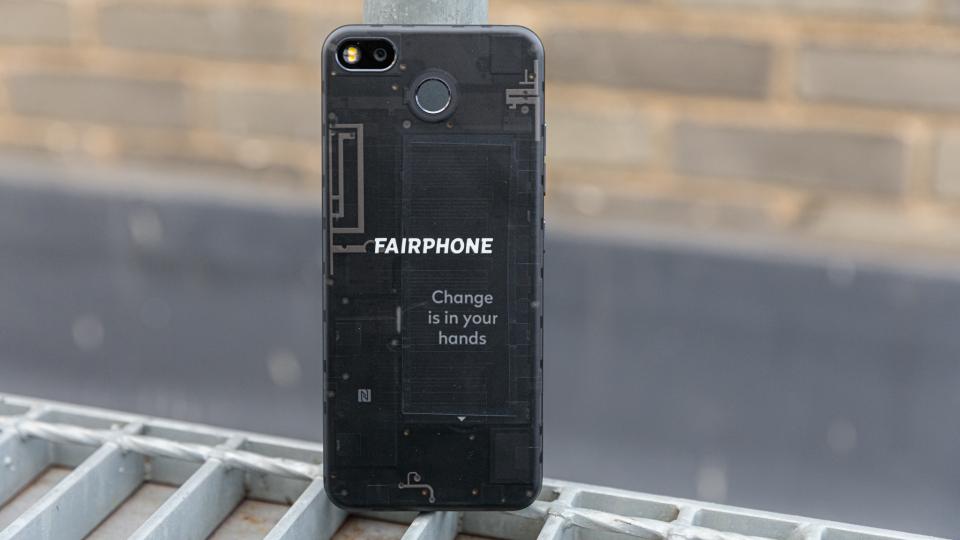 Our Rating Price when reviewed 383inc. VAT (converted from €450)
Our Rating Price when reviewed 383inc. VAT (converted from €450)
The Fairphone 3 is a noble project, but in raw specs you’re paying more for less
Pros Clearly taking environmental concerns seriouslyExtremely repairableBloatware freeCons Good ethics doubles the pricePerformance is subpar across the board
It’s an open secret that phones are environmentally costly. The industry as a whole does its best to avoid showing how the sausage is made with greenwashing promises of recycling and factories using renewable energy, but ultimately our e-waste is an ecological nightmare, and two-year-upgrade cycles are largely based on shareholder wants, rather than the planet’s needs.
As someone who spends the majority of his time writing about tech, that presents a constant ethical gnawing at the back of my mind. If you have similar concerns and want to put your money where your mouth is, then Fairphone is the company for you. But there will be many, many compromises along the way.
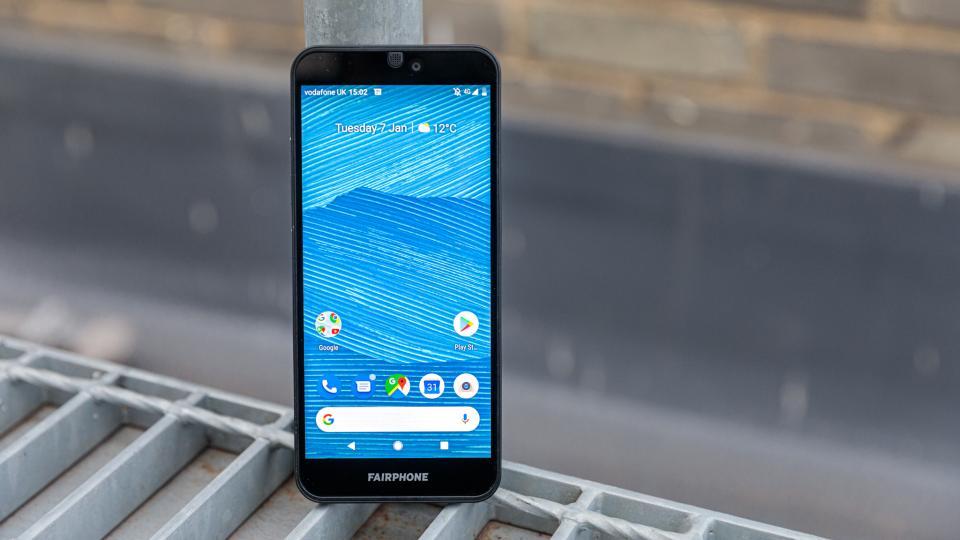
Fairphone 3 review: What you need to know
Wander into your local phone shop, and there’s simply not an ethically clean choice on the menu. They’re built by low-paid workers in unpleasant conditions with finite precious metals, used for 24 months, and then replaced. Very few are designed with repairability in mind: in most cases, you can’t even put in a new battery without voiding your warranty.
Fairphone takes a different approach, aiming to put sustainability and humans first. The former by designing its handsets to be repairable by users, with components that can be reused to reduce e-waste; the latter by sourcing conflict-free (and ideally recycled) minerals, and by focusing on good conditions in its factories. The company openly admits that this is a work in progress, but it’s lightyears ahead of its competitors.
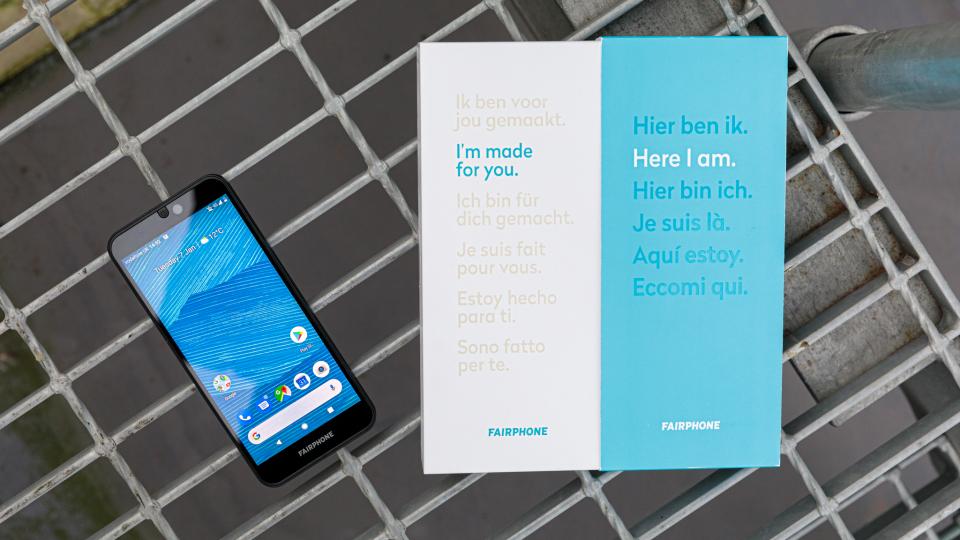
Admirable as this approach is, if you’re thinking that the result won’t be cutting-edge technology, then you’re 100% correct. The Fairphone 3’s specs are distinctly middle of the road: namely, the Qualcomm Snapdragon 632 processor and 4GB of RAM. That’s the exact same specification as our budget favourite, the Moto G7 Power.
Fairphone 3 review: Price and competition
That’s awkward because the Fairphone 3, as environmentally friendly as it may be, costs €450, which is around £383, with contracts starting at £28 per month at Vodafone with a £99 upfront cost. And – for extremely sensible green reasons – that price doesn’t include a plug, cables or earphones.
Obviously Fairphone is very much ploughing its own unique furlough in the smartphone world, so finding direct competition is tricky. If you want something of similar specs, then look no further than the Motorola Moto G7 Power, which has the same processor and RAM, but sells for £180.
So, what can you get for the £383 that the Fairphone 3 sells for? Well, the Pixel 3a retails for £399, but can routinely be found for £350.
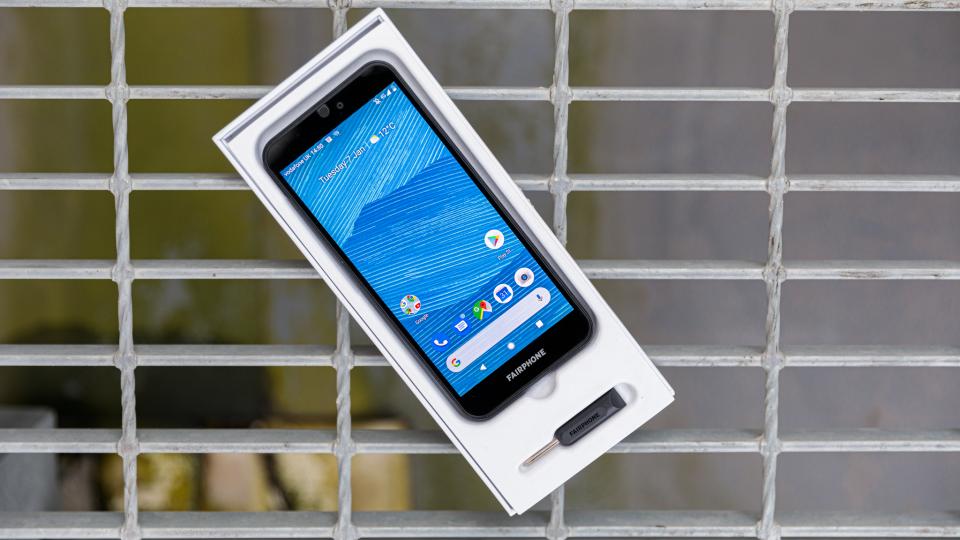
Obviously you can get a lot more phone for your money by looking elsewhere, but by buying a Fairphone, you’re in effect subsidising better business practices, so it’s not an entirely fair comparison. Nonetheless, we are a tech site, so it would be remiss not to highlight the alternatives.
Fairphone 3 review: Design
The Fairphone 3 has a somewhat dated look from the front. It has the kind of bezels that haven’t been seen on a smartphone for quite some time – especially at the top and bottom of the 18:9 screen. It comes with a thick rubberised bumper around the outsides to protect from drop damage, but this can be easily removed if you like.
Flip it over and it looks a lot more distinctive – and largely in a good way. It’s a transparent but slightly opaque plastic case, so you can see exactly what makes it tick. The word “Fairphone” is embossed in all caps, and the words “change is in your hands” are visible, printed on the battery underneath.
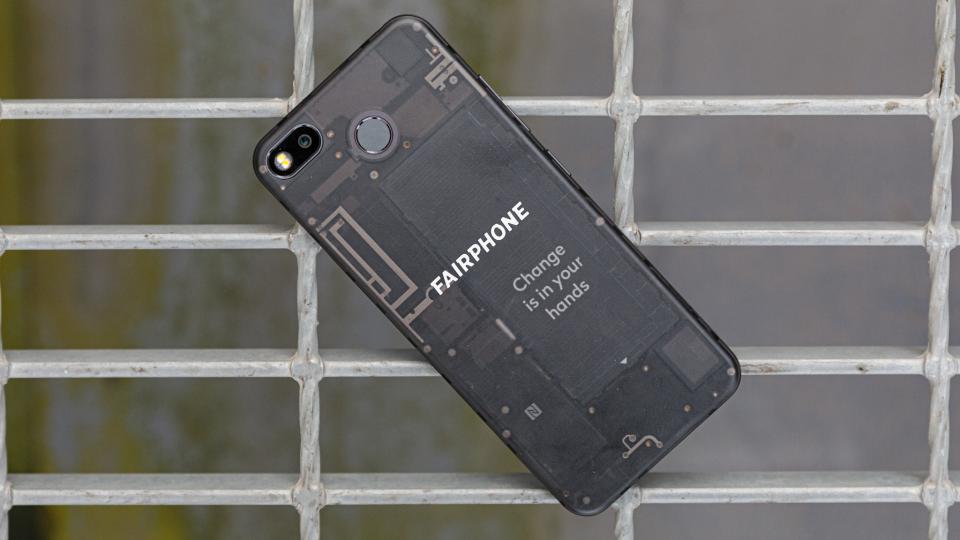
Before I get onto the main point where the Fairphone 3 leaves all other smartphones in the dust (read: repairability) I’ll just quickly highlight a couple of other key points. It uses USB Type-C charging, has a 3.5mm headphone jack, supports NFC, has two SIM-card slots and an additional microSD card slot supporting cards of up to 400GB in size. All good, consumer-positive stuff that’s to be applauded.
Fairphone 3 review: Repairability
This isn’t a section we usually include on Expert Reviews, because it would be extremely short. Most phones aren’t designed to be fixed by muggles, and even the much-loved removable battery has long proved unpopular – of all the phones I looked at last year, only the Moto E6 Plus let you sub in a new cell.
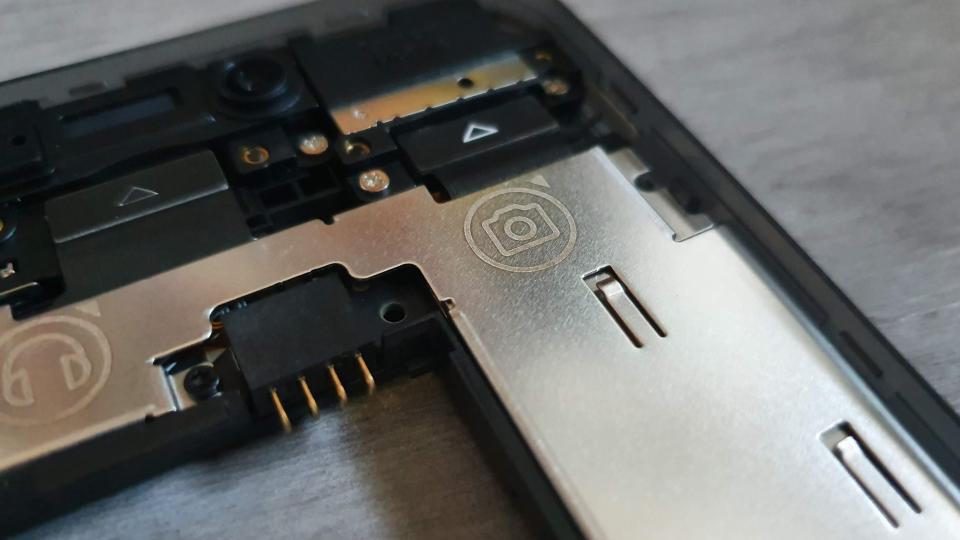
That isn’t great for consumers, but it’s far worse for the planet. “Reduce, reuse and recycle” are the three ‘R’s of sustainability, and the phone industry is lousy at each of them. In tackling this particular pernicious problem, Fairphone has not only made the Fairphone 3 repairable, it includes a screwdriver in the box and detailed instructions on its website.
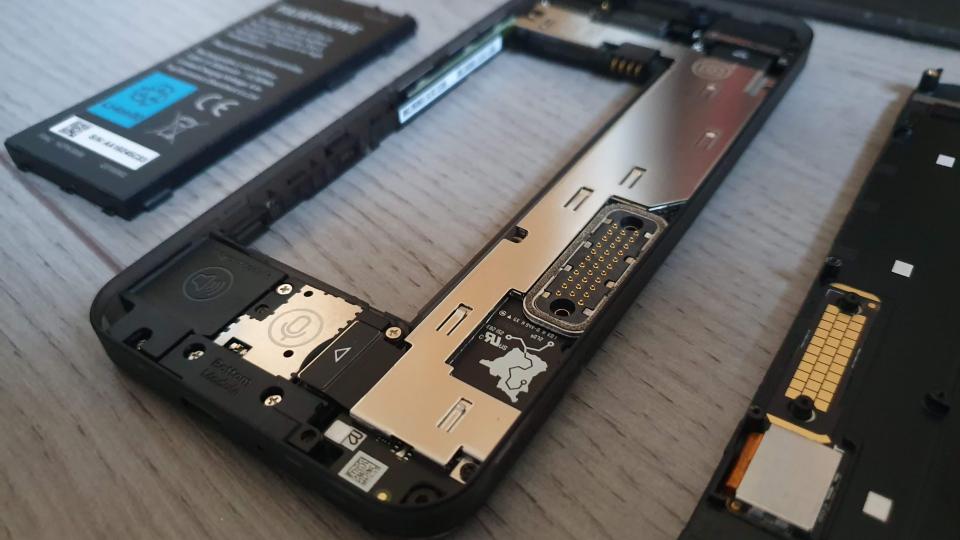
Taking off the plastic back and removing the battery, you’re presented with 13 teeny-tiny screws to pick out. These magnetically stick to the screwdriver, but they’re still pretty fiddly. Once removed, you can simply pop out the screen by pushing it through where the battery compartment used to be – with a little extra fingernail to get it out, you’re home free.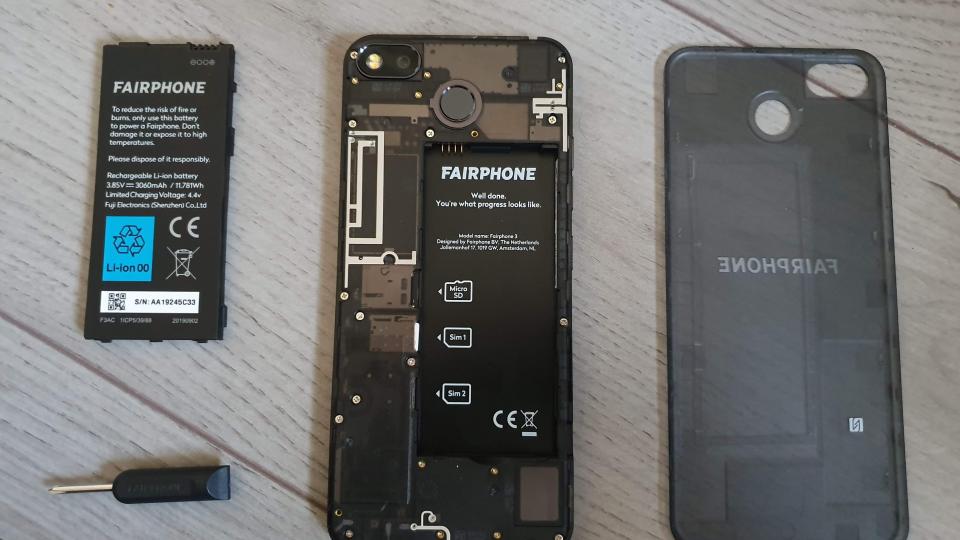
It’s absolutely brilliant that Fairphone has made the Fairphone 3 as fixable as it is, and demonstrates a company willing to walk the walk, as well as talk the talk. At the time of writing, the Fairphone 3 and Fairphone 2 remain the only smartphones to get a 10/10 repairability rating from iFixit, and that should be applauded.
Fairphone 3 review: Screen
The Fairphone 3’s 5.65in IPS screen has a resolution of 2,160 x 1,080, which is more than enough for a screen of this size. The thick bezels at the top and tail of it gives it a certain retro feel, and unfortunately the accuracy isn’t doing it any favours either.
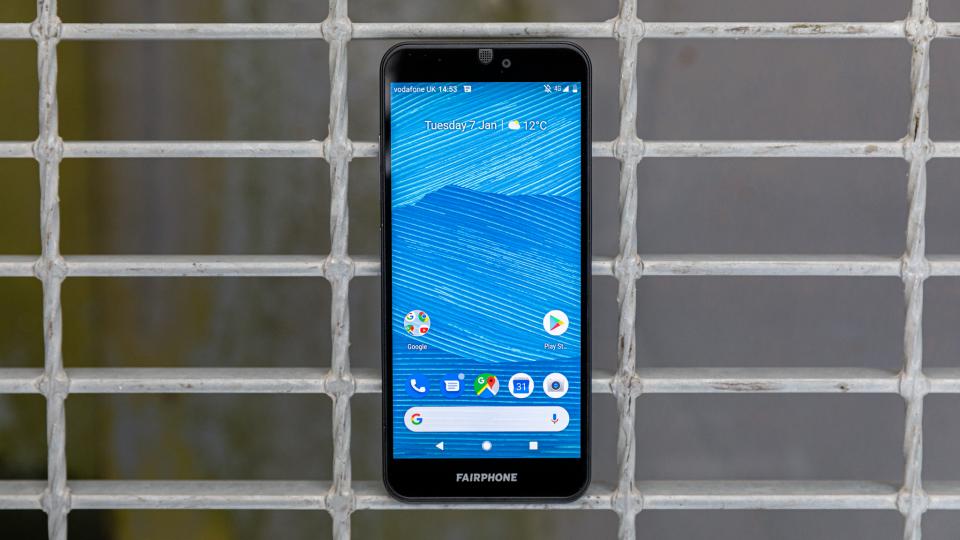
Our colorimeter showed a phone that’s capable of displaying 95.3% of the sRGB gamut, with a volume of 122.1%. That means colour accuracy isn’t all that, and it’s also quite reflective to look at.
It’s not without its good points – brightness is high, with a measured 503cd/m2, and contrast is a very respectable 1,649:1 – but all things considered it’s a pretty middling screen. It does the job, but it’s easily beaten by those found on cheaper handsets and you’d hope for better at this price, even if it can be easily replaced should it break.
Fairphone 3 review: Performance
The Fairphone 3’s specs are fair, but not in the way the company might hope. A Qualcomm Snapdragon 632 processor paired with 4GB of RAM is exactly what you can find in the Moto G7 Power – a phone which sold for over £200 less when it launched last year. Now the Moto G7 Power was our budget favourite for quite some time, but it’s fair to say that if Motorola had put a £350 price tag on it, we would have given it an absolute kicking.
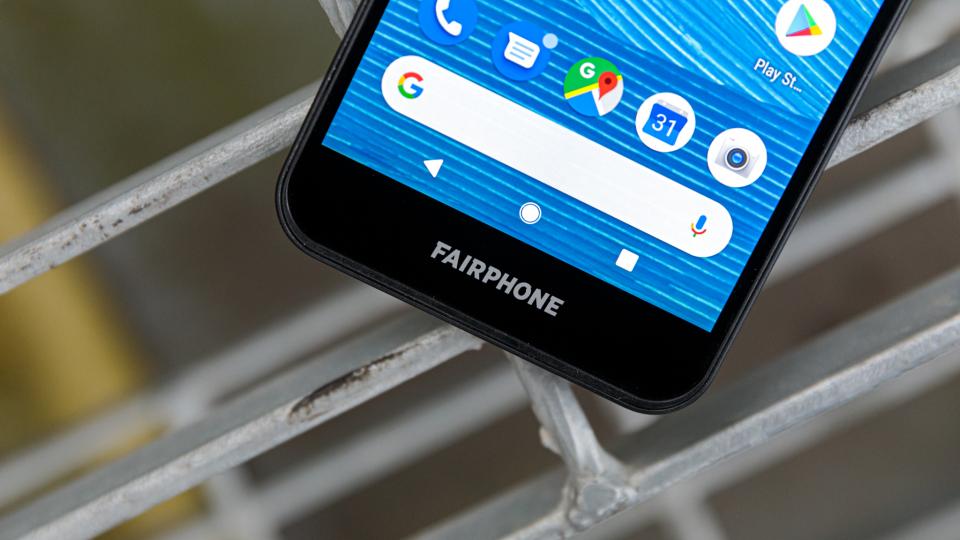
With that in mind, the Fairphone 3’s day-to-day performance is solid, but unspectacular. It doesn’t frustrate out of the box by any means – no doubt aided by the bloatware-free installation of Android 9 – but counter-intuitively for a phone that values sustainability, it’ll likely be creaking sooner than the similarly priced Pixel 3a.
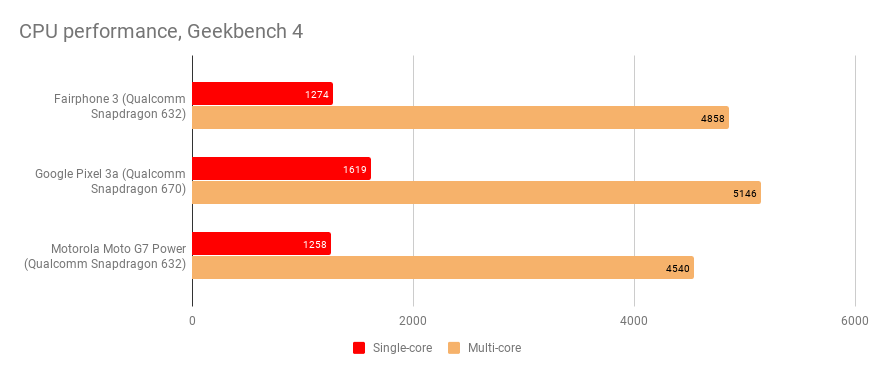
And as you can see from the graph below, things become starker when you do a gaming test. The Pixel 3a managed nearly three times the framerate of the Fairphone 3 – which is unsurprisingly identical to the Moto G7 Power (it may look like it’s worse, but this is down to the Moto’s lower-resolution screen allowing it to pump out more polygons.)
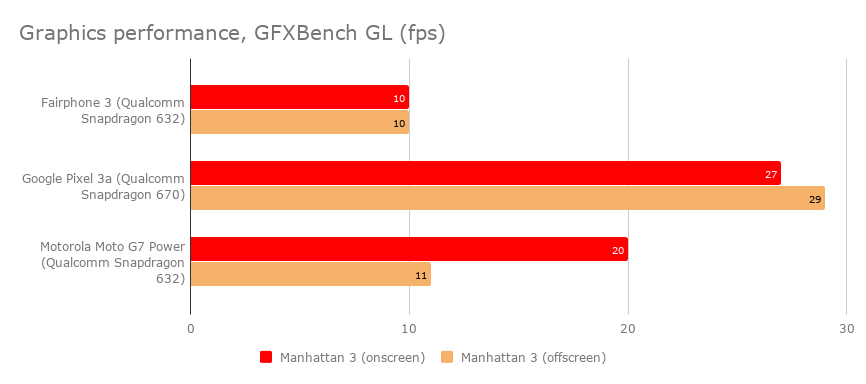
In terms of battery life, it’s about par for the course, with a total running time of 14hrs 20mins in our in-house test. As you can see, that puts it a nose behind the Pixel 3a, but a whole Pinocchio proboscis behind the 5,000mAh battery of the Moto G7 Power.

Fairphone 3 review: Camera
The Fairphone 3 has a single 12-megapixel rear camera with an aperture of f/1.8. This may sound pretty weak in an age where triple and even quadruple-camera arrays are increasingly commonplace, but if it means less waste on a depth sensor I barely use then I’m all for it.

Crucially, the similarly priced Pixel 3a gets away with just a single camera and produces some of the best photographs around, so the Fairphone 3 is in a good position for a fair fight – especially as both phones use the same Sony IMX363 camera sensor.
![]()
At a glance, the Fairphone 3 does reasonably well, as the picture above shows, even if it is a little underexposed. But put it up against the Pixel 3a and it’s not even close. Zoom in on this rooftop shot and you can still see individual bricks on the Pixel 3a – with the Fairphone 3, they’re just a smudge of dark red.

Again, at a glance in tricky low-light conditions the Fairphone 3 copes pretty well, but it just can’t compete with the Pixel 3a with lots of visual noise creeping in around the teddy bear’s head and on the edge of the mannequin. The Pixel 3a has some of this – all cameras find this test tough, after all – but nowhere near as much.
![]()
The front-facing camera is an 8-megapixel affair with a f/2.0 aperture. The results are slightly lacking in detail, but good enough for video calls. If vanity is your main concern, then chances are you’ll be looking at a more stylish looking handset anyway.
There’s no sugar-coating it, the Fairphone’s video is poor. It looks good on paper, with the phone offering support for 720p, 1080p or 4K video capture at 30fps (with 60fps for 1080p, which is weirdly listed as 120fps in the software due to a bug), but the footage is grainy and the camera struggles to maintain focus while panning. Both 720p and 1080p footage should be stabilised – there’s a toggle to enable stabilisation – but the video bounces all over the place. Colour accuracy is poor and, even taking into account the grim winter day in London, footage was pretty murky.
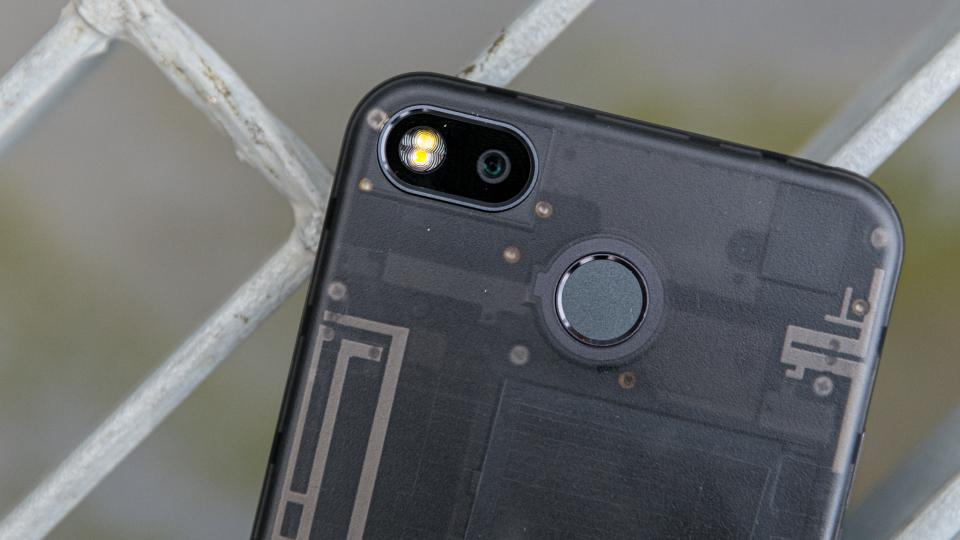
Fairphone 3 review: Verdict
Ironically, for a handset called Fairphone, it’s hard to review the device fairly on a tech site. On its own merits as a smartphone its objectively weaker than its similarly priced rivals, except in terms of repairability where it’s several magnitudes better.
But that’s overlooking the Fairphone 3’s real USP which is fairness. Fairness in the supply chains it uses, the factories in which its built and for the future of the planet. These things have their own price and it turns out it roughly doubles the cost of a handset. The Fairphone 3 is very similar in specifications to the Moto G7 Power – a phone that could recently be had for £100, or roughly 25% of the Fairphone is asking for.
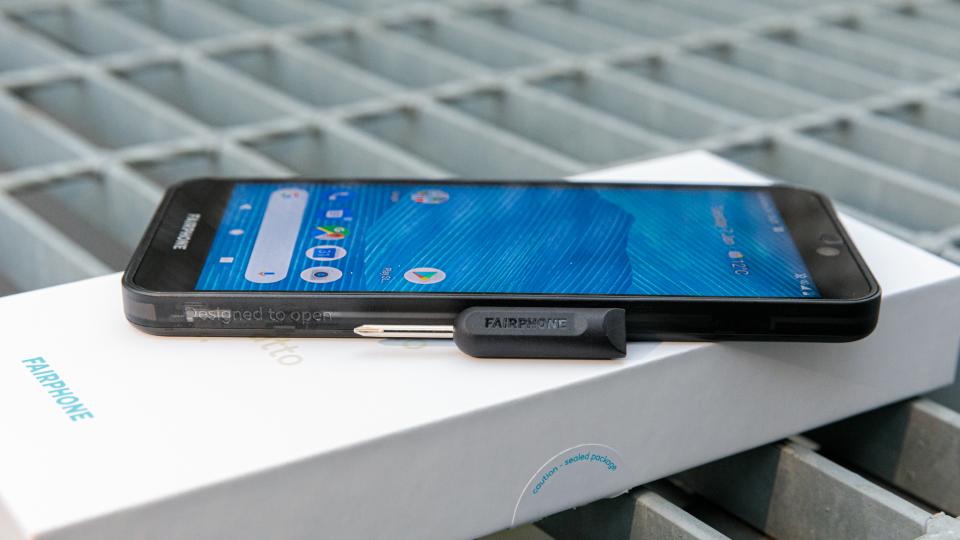
With that in mind, it’s very hard to put a score on the Fairphone 3 – it’s like comparing a slightly disappointing fair-trade apple with oranges farmed exclusively using slave labour. If environmentalism and fairness is the thing you’re looking for, then there simply isn’t any other choice. Though it’s something of an irony that the older components used in the Fairphone 3 means well-meaning buyers may be looking at upgrading faster than their less conscientious brethren who instead opt for an unethically made flagship.
For that reason, Fairphone 3 gets a two-star rating, with a bonus extra star for putting environmental concerns front and centre.

